After two months in Southern Europe soaking up as much vitamin-D as possible, Angus Dodds provides some observations on urban living on the continent – some of which we might do worse than try to emulate in Scotland…
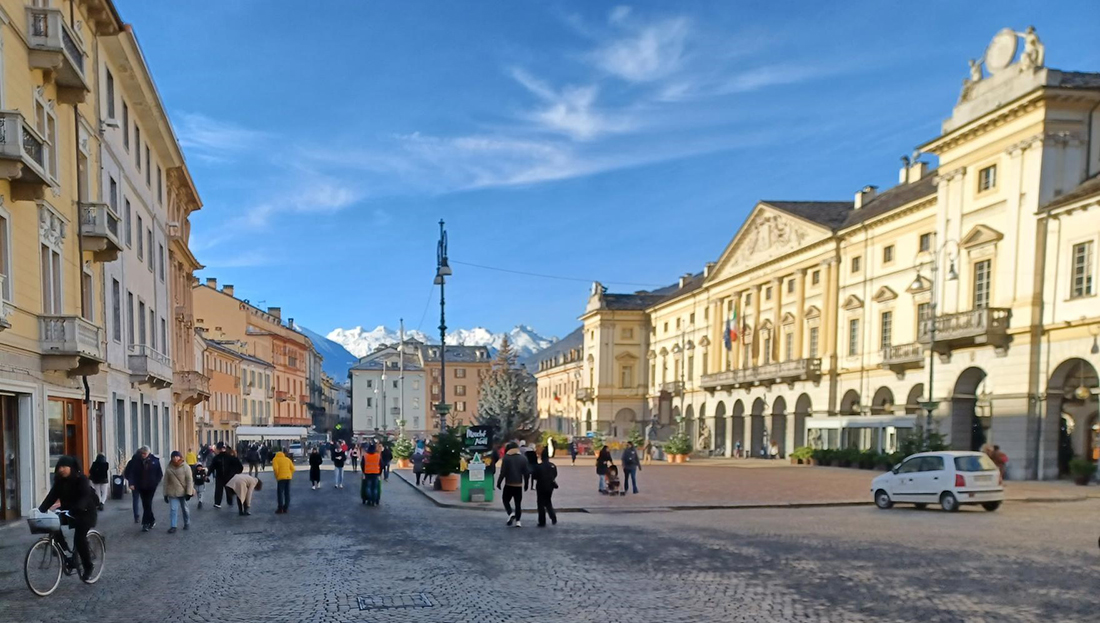
Whether I’m in Aberdeen, Addis Ababa or Aosta, as long as I have wifi I can submit planning applications. Accordingly, back in November I thought I would make the most of being a footloose planning consultant and head for warmer climes this new year. Having spent the last 2 months travelling and working around a fair chunk of latin Europe, here are a few of the things that have stopped me in my tracks.
Storks
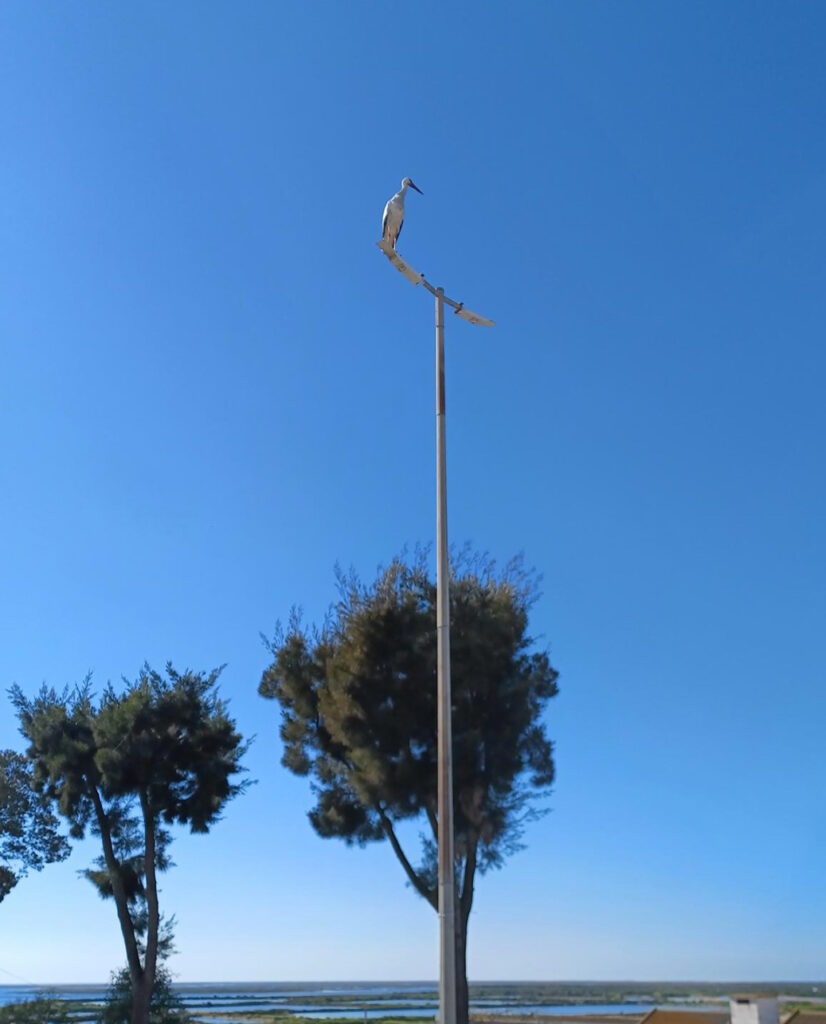
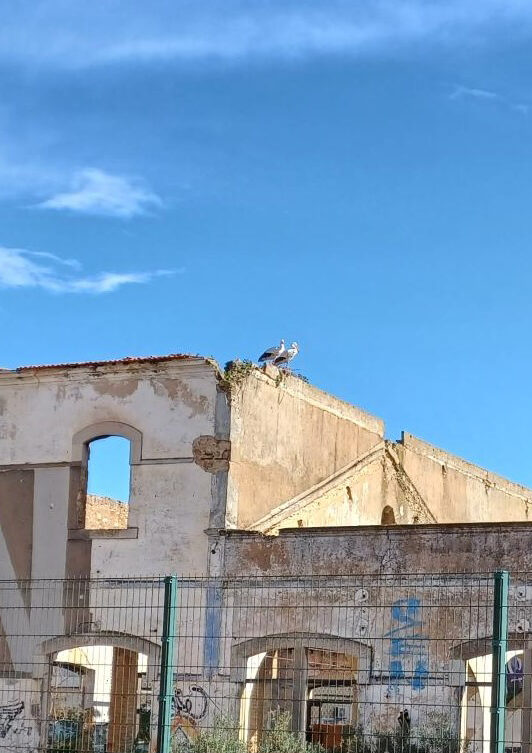
Olhao, Portugal
I now realise that they are ten-a-penny in the Algarve, but I couldn’t quite believe just how many white storks there are in Southern Portugal. They might never be described as graceful, but there is something endlessly fascinating about watching a stork doing its thing – and seeing how these prehistoric looking creatures have colonised so many parts of the urban landscape was quite a revelation for me.
Thinking of my Aberdeen analogy, it seems to me that storks have two major advantages in this regard over seagulls: firstly they don’t swoop down to steal your chips/pastel de natas; secondly, by an evolutionary quirk the white stork doesn’t have a voicebox, but communicates instead by clattering its beak (which is only mildly annoying). In the circumstances, as urban bedfellows they’re an unexpected delight.
Having read up a little more about them I was also surprised to learn that historically they used to live on the British Isles in pretty large numbers – the last recorded pair of breeding white storks were evicted from the roof of St Giles Cathedral in Edinburgh in 1416.
That of course was before the start of the ‘little ice age’. With that period now well and truly over however, the UK might well be a stork friendly environment once again. Three years ago in fact the first pair to successfully breed in the UK since the 15th Century were announced as having set up home in Sussex.
All I’m saying is that if (urban) rewilding becomes a thing, let’s get some storks in Scotland!
Tiles
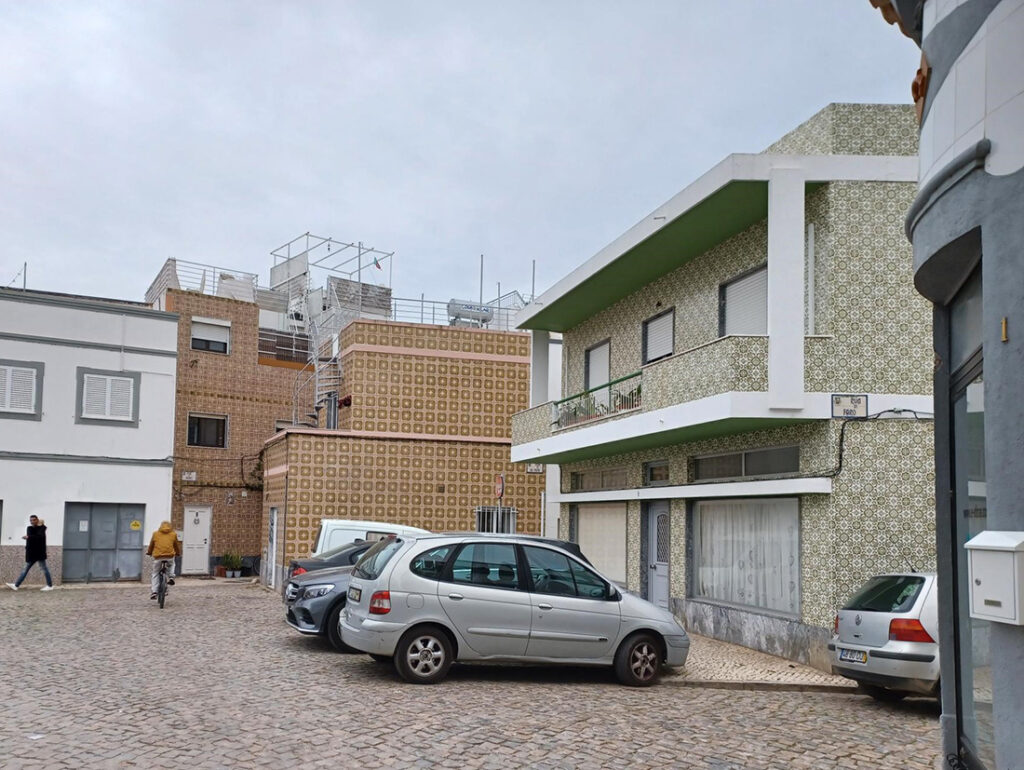
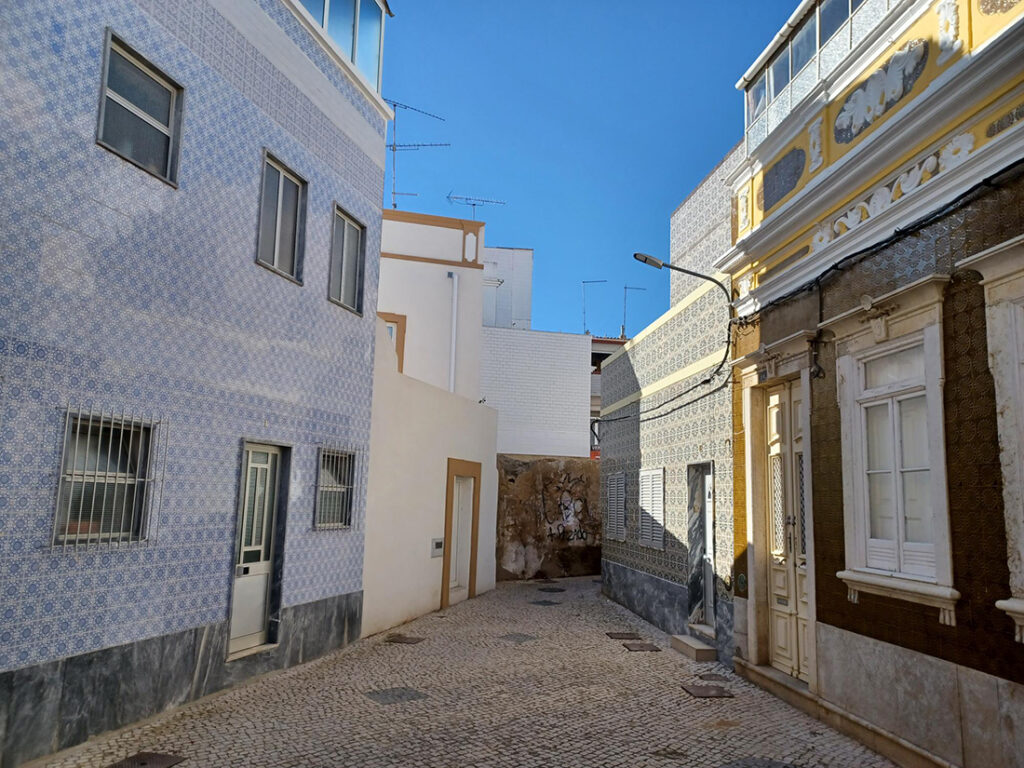
Olhao, Portugal
I also hadn’t realised quite how ubiquitous ‘azulejo’ tiling decoration was across Portugal. I had assumed that it was something you only found in the gentrified barrios of Lisbon or Porto. How wrong I was.
Olhao, a fairly animated town of about 40,000 people in the eastern Algarve was where I spent most of February. It’s a great place. Neither twee nor down-at-heel, it just felt like a normal, medium-sized town. There were a few supermarkets, a lively High Street, a harbour that landed fish, a few schools, a public swimming-pool, a local football team etc etc. It seemed like a place where Portuguese people actually lived and did stuff.
It was also clearly a place where people did stuff to their houses with whatever was to hand rather than by trying to win any design awards. When it came to the exterior tiles on display therefore, there was a lot less shabby-chic on show, and a lot more of the garish tile designs your grandparents might have had on display in their bathrooms in the 1980s. It turns out however, that when they’re not vying for prominence with a crinoline-skirted loo-roll holder, these striking tiles actually look great as the external finish of choice for ensembles of informal buildings.
Reflecting on these houses with an Irish friend that came to visit, she remarked that when she’d first come to Scotland 23 years ago, she found the drab colours of our housing seriously depressing and a sad contrast to what was on offer in Ireland. When I pointed out that climatic factors and the dread of never-ending maintenance may explain our hesitancy with colour, she reminded me that twice the amount of rain falls across the Irish Sea, but unlike us, they still routinely try and keep things looking cheery with a spot of paint.
As Olhao demonstrates very effectively, if the basic urban design of a place isn’t overly formal, we certainly shouldn’t be afraid of colour, or of necessarily using the ‘right type’ of external materials to enliven our urban landscapes.
Open Spaces
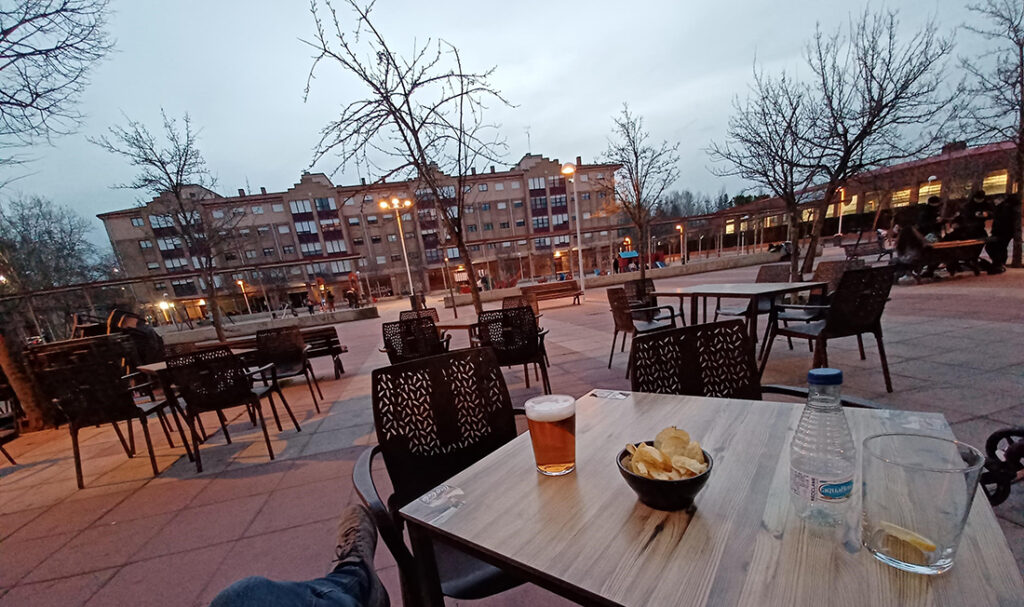
No revelations here, but confirmation of my long-held belief that Spanish people use public open spaces more effectively and thoughtfully than anyone else. Ghandi said you could tell the greatness of a nation from the way they treat their animals; I’d say you can tell how civilized an urban population is from the way they use public open spaces together.
One in particular that sticks in my mind was a square in Valladolid – roughly halfway between Porto and Bilbao. I had a beer there in mid-February around teatime. Here in a fairly central residential suburb, I must have seen perhaps 50 -100 people using this public space, ranging in age from 5 year-olds to those in their 80’s and 90’s.
It was remarkable for two reasons. Firstly, the square was absolutely nothing to look at. I had stopped there for a drink because I’d just been swimming and it was a handy place to grab a beer and check some emails. Generally however, the buildings surrounding the square were grotty 1980’s flatted residential blocks, with a swimming pool along one side and a café at one of the opposing corners. This wasn’t a showpiece activity space.
Secondly, with to the best my knowledge no supervisors on hand, throughout the whole 40 minutes or so I sat there, no single group seemed to take over the square to the detriment of other users. I don’t doubt there is occasional user conflict in spaces like this, but from my own experience of sipping various beers on various squares around Spain, I just didn’t see much evidence of the dog-walkers impacting the footballers impacting the toddlers impacting the skateboarders etc etc.
In Spain public open spaces that work don’t need to be fancy. Yet somehow, from the downright dog-ugly to the grand and statue-crammed, squares all over the country in villages, towns and big cities, all seem capable of being enjoyed by a full range of different users. I don’t know what the secret is (and it’s not weather by the way, it was about 6 degrees celsius in Valladolid), but it’s something we could learn a lot from.
Signage in Aberdeen
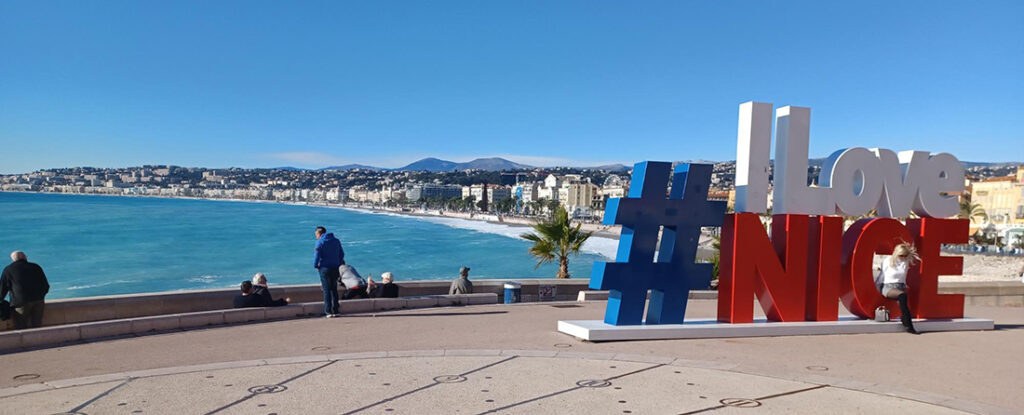
And on the subject of learning from other places, while trying to keep abreast of what was going on back home, I learnt of the furious debate that seems to have been generated by proposals from Aberdeen Inspired to create a ‘Holywood-style sign’ for instagrammers to pout in front of when visiting my hometown.
I’m all for anything that helps instill residents and visitors with a sense of place in the Granite City – which to my mind is the most distinctive looking city in Scotland. However, from my travels, I did see quite a number of these very similar signs in various places across Iberia and France, as well as here in the UK.
As a subtle alternative therefore, I would love to see some clever signage being used to bring attention to the place; but which also shows that Aberdeen isn’t just somewhere that follows the herd.
It needn’t look too far for an interesting way to address this either, as it actually already has its own striking signage that helps to amplify its visual independence. Couldn’t something instantly instagrammable and straight out of the ‘azulejo’ book be created by using the Council’s own proprietary street tiles in an inventive way? The City is home to many talented public artists like Craig Barrowman who could doubtless come up with something playful and visually arresting that could draw on good ideas from elsewhere – without losing the distinctiveness which really marks out the city in the first place.
Craig Barrowman
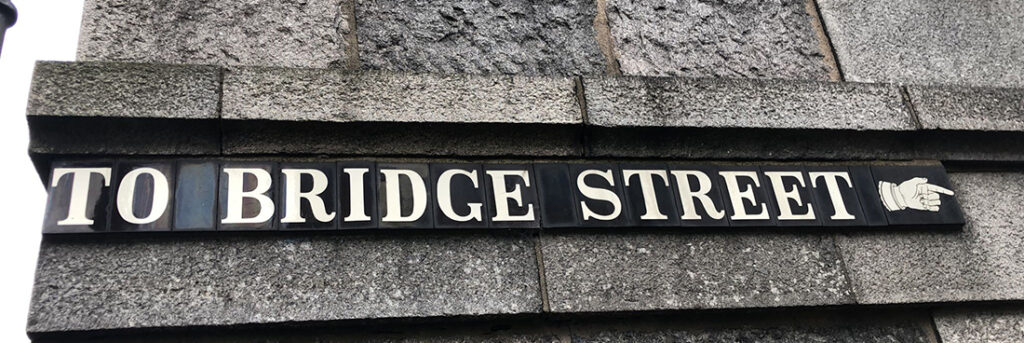
If you want to speak to Angus about anything at all concerned with planning (and not just big birds, shiny tiles or public squares) feel free to Get in touch on 07729 873829, or by email at angus@contourtownplanning.com
